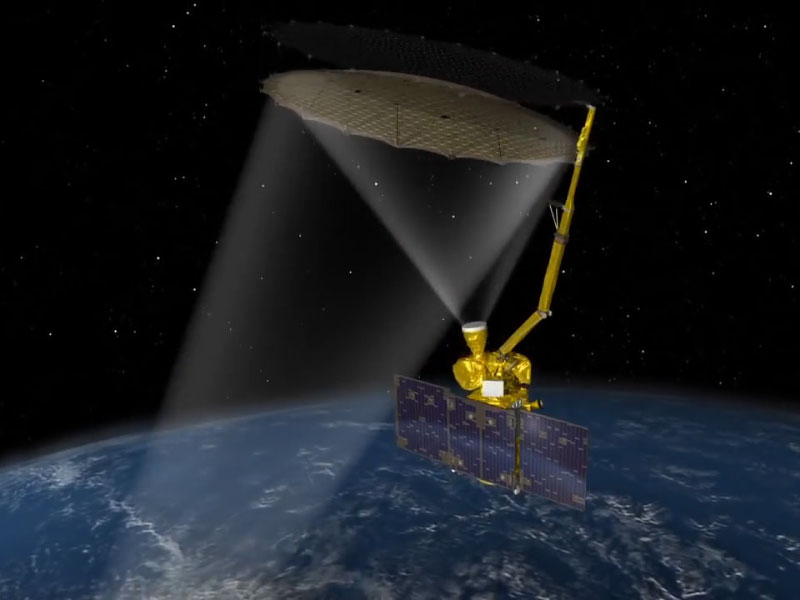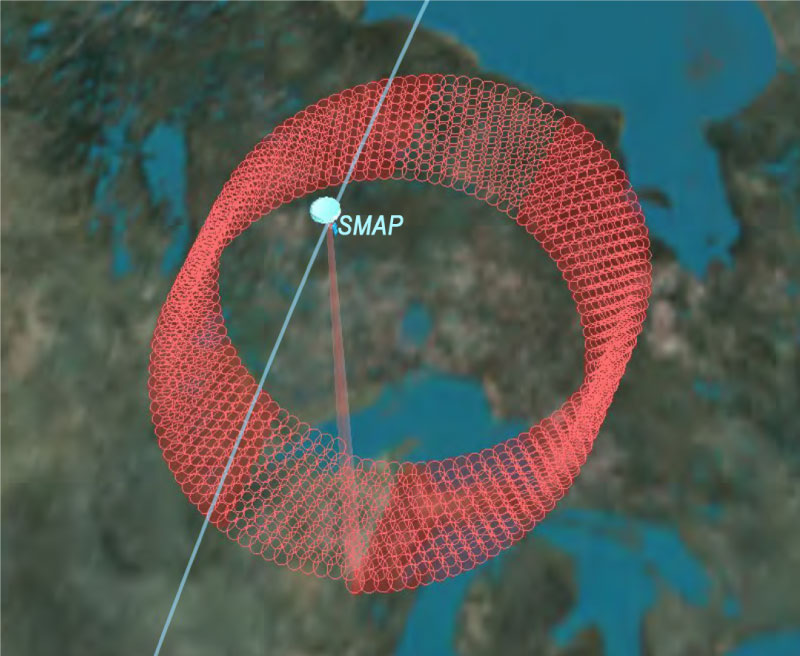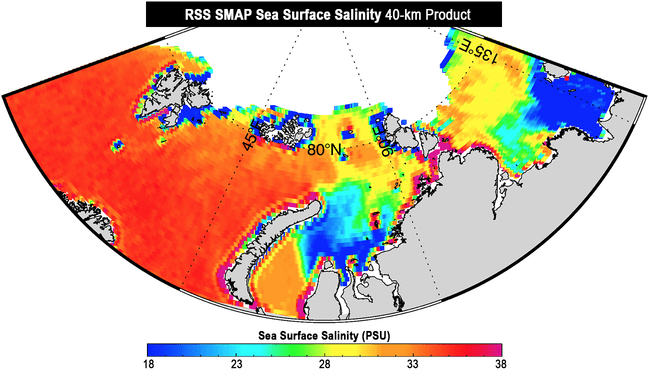The "land correction" that we apply is more of a far sidelobe correction. It takes out the effects of the far antenna sidelobes. However, this method breaks down if there is land contamination in the main antenna lobe.
Where is the main antenna lobe? Its diameter is 2.5 times the 3dB footprint diameter. The 3dB footprint diameter is where the power has fallen by half, which for SMAP is at about 40 km (~25 mi). As a result, the RSS "land correction" works up to about 40 km from the coast.
The correction is based on a pre-computed table based on this methodology:


The Level-3 (i.e., gridded) example includes northern Russia and part of the Arctic Ocean averaged over about 8 days. In the 40-km product, you see the data in most places. This is because we don't screen out data close to land in the gridded 40-km product. We do apply some very basic Q/C – which means we throw out sun glint, sun glitter, very high galaxy, very high winds – so there is some limited Q/C in the Level-3 files. For example, in this particular 40-km product, you see contamination from land and sea ice.
Note, however, that our Level-2 (swath) 40-km product basically includes all the data without doing any screening; however, Q/C information is available in the data files, which users can apply themselves if they want data close to the coast.
We consider the 70-km product as "science grade" (i.e., for scientific publications). To produce 70-km gridded data, we go back to the 40-km product. We apply Q/C checks based on our very extensive analysis of the degradation caused by various factors, including land and sea ice. We screen out those data and then do a simple smoothing after we have taken them out. This results in the loss of the some of the data. This can be seen in the pink "land and sea ice mask."